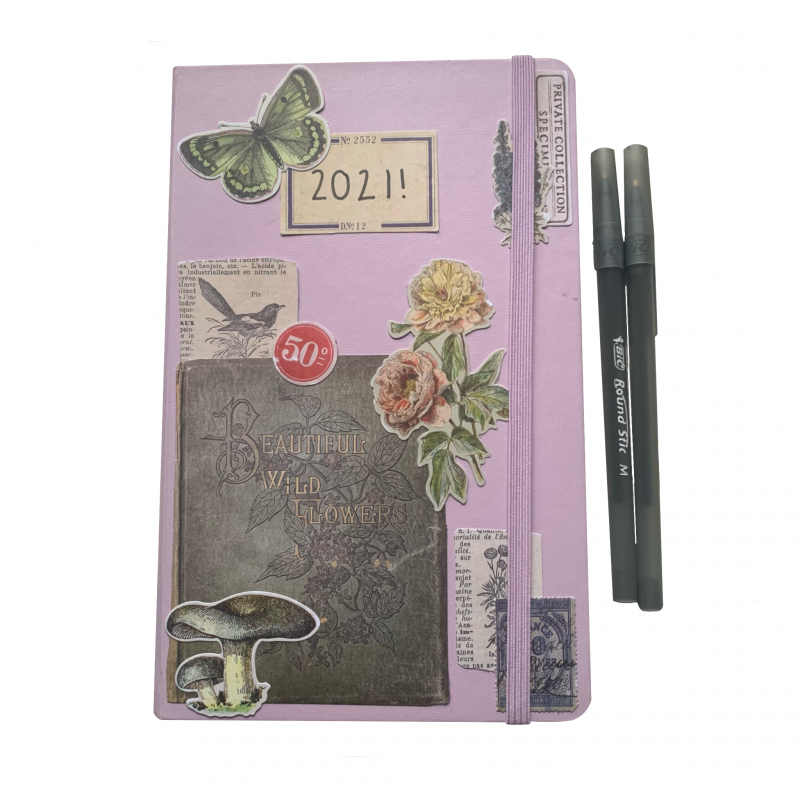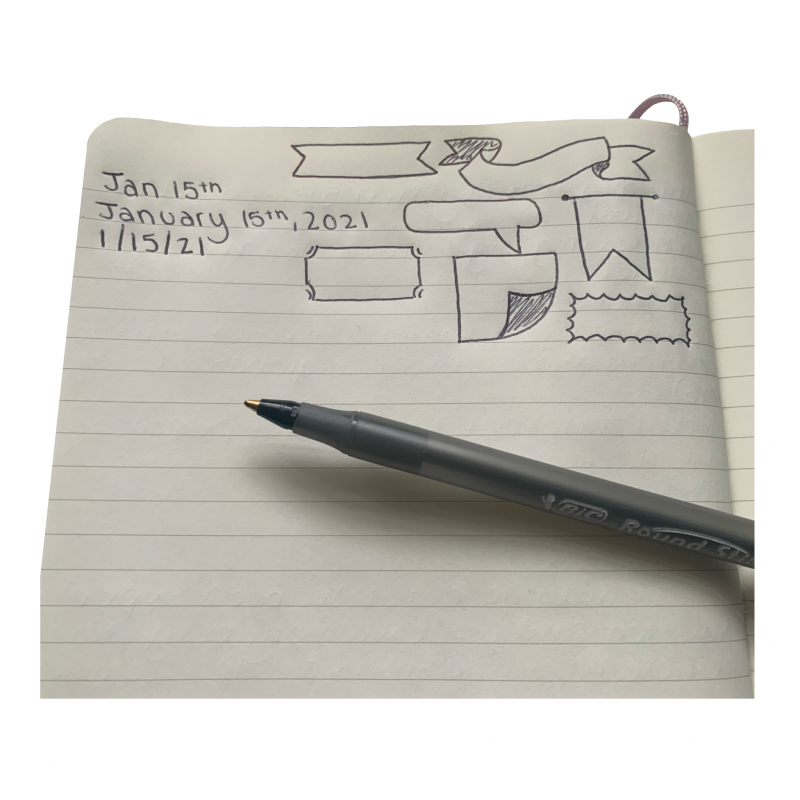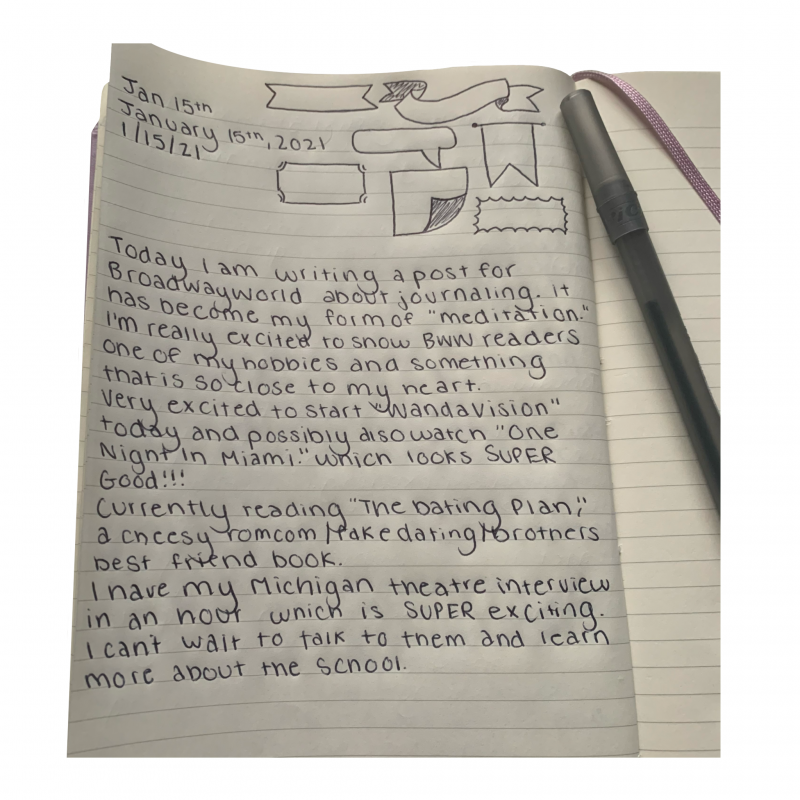BWW Blog: Journaling 101 - 5 Easy Steps to Start Your Own Journal
Journaling is not for everyone, but if you haven’t tried it yet, get a new notebook and some pens. If you don’t try it, you will never know what you are missing.
Improving my mental health was one of the most important New Years Resolutions I had for the new year. There are so many unique ways to improve your mental health, whether meditating, crystals, coloring, dancing, or reading. For me, my personal "meditation" is journaling. I have been journaling for a long time now and have found it the best way to express my feelings, even if nobody reads what I write. I want to share my love for journaling with everyone, so I created a simple 5 step post for you to start your journaling adventure. Think of this article as a WikiHow for journaling.
 Step 1: Supplies
Step 1: Supplies
All you need to start journaling is a notebook and a pen. Don't listen to all of the articles and videos that will tell you that you need a specific notebook, colorful pens, stickers, etc. What you need is a quiet space to write. Once you start journaling more and more, you will find what writing system works for you. Personally, I use a Moleskine for all of my notebooks and the basic BIC ballpoint pens that come in a pack of 30. I use a pen to write because I won't feel tempted to erase anything. Journaling is one big brain dump, and you should just let your thoughts flow, but we will get to that later! I may use a colorful pen here and there to mark something super memorable, but the more basic, the better. You should decorate your notebook however you want, inside and out. On the front of my journal, I have a few stickers from Michaels that I used to decorate, but I don't do much on the inside. Just me and my BIC pen against the world. But remember, the important stuff is on the inside.
 Step 2: Write the Date
Step 2: Write the Date
It is always good to start any journal entry with a date. Open up to a brand new page and write today's date in the top corner (in my photo, I included a few ways to write it and some simple border decorations if you want to add some!). Some of you may want to add the time in which you write each entry that you make. I choose not to because I like to look back at each day and read it as a long essay with many paragraphs.
Step 3: Get In The Zone
I always like to find somewhere quiet to write, no matter where I am. This usually means lunchtime at school and at night in bed. If that isn't your thing, you can maybe listen to music, put on a youtube video, or sit at a Starbucks and drink some coffee. This is all to get you in the zone so do whatever works for you.
 Step 4: Ways to Write Journal Entries
Step 4: Ways to Write Journal Entries
Now we get to the good stuff. Journaling can be challenging if you have never tried it before. "What do I write about? Is it weird writing in the 1st person to myself? Nothing interesting happened to me today. Is my future self going to care what I ate for breakfast?" You will get in the groove eventually, so don't worry. I still think about how I'm writing about my day to myself and how no one else in the world will read it except me in 20 years. If you are having trouble structuring your journal entries, here are a few ways to document events from your day:
- Chronologically: You can write about your day split up into three sections: morning, afternoon, and night. This method is what I use when I cant journal throughout the day and decide to write everything down at night. That way, I can easily talk a little bit about each part of my day.
- Most Important Events: This method means you document the most important things that happened to you today. Whether that is one thing or ten things, it is still worth writing down.
- One Big Entry: If you aren't able to make it to your journal and your quiet place every day, on a day that you can write, make one big entry. For the date, you can put a range of dates that you are going to be writing about. That way, you can jot down everything you can remember without having to rush one separate entry on a day that you do not have time to.
Step 5: What to Write Journal Entries About
Besides writing about your day, journaling is a creative space where you can write all about your favorite topics. Imagine your journal is a time capsule and that in the future, you will be able to read about what Broadway musical was your favorite and what foods you have been loving recently. This is where creativity flows. Whatever topics come to mind, write about them. Here are a few ideas of other entries to make:
- Broadway
- Current events
- The dream you had last night
- Politics
- Movies & Shows
- Books
- What you are grateful for
- People watching (imagine the life stories of people walking by you every day)
- Favorite foods
- Random notes for you to remember tomorrow
- Script ideas
- Favorite quotes
- Fears
If there is ever a time when you have NO IDEA what to write about, Pinterest is always a great place to find journal entry questions to get you out of a writing slump.
Final Notes:
- You do not have to journal every single day. I always try to write something down, but sometimes I just don't get around to it. Don't stress because journaling is supposed to relieve stress, not cause it.
- Carry your notebook everywhere. This helps with the point I listed above because if you ever have a little bit of free time, you can journal. If you remember a homework assignment but you aren't near a computer: write it down. If you ordered a new kind of coffee and want to remember it for next time: write it down. If you hear a new song that you want to remember to put on a playlist: write it down.
- Decorate: Make your journal not only fun to read, but fun to look at. It took me a while to realize that it was ok if I doodle everywhere and if my handwriting wasn't the best, but I realized that I am the only one seeing what I am writing, so I can do whatever I want!
Journaling is not for everyone, but if you haven't tried it yet, get a new notebook and some pens. If you don't try it, you will never know what you are missing.
Videos


